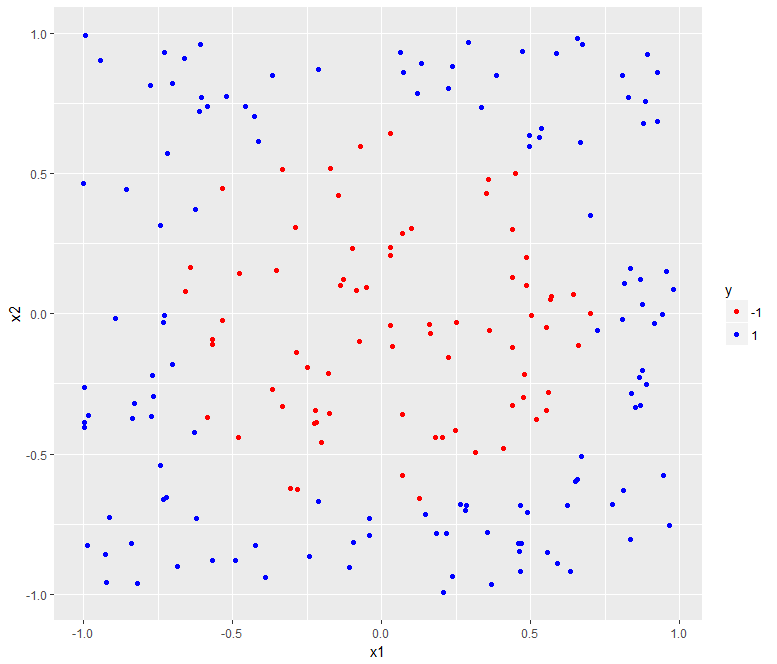Generating a radially separable dataset
Support Vector Machines in R

Kailash Awati
Instructor
Generating a 2d uniformly distributed set of points
- Generate a dataset with 200 points
- 2 predictors
x1andx2, uniformly distributed between -1 and 1.
- 2 predictors
# Set required number of datapoints
n <- 200
# Set seed to ensure reproducibility
set.seed(42)
# Generate dataframe with 2 predictors x1 and x2 in (-1, 1)
df <- data.frame(x1 = runif(n, min = -1, max = 1),
x2 = runif(n, min = -1, max = 1))
Create a circular boundary
- Create a circular decision boundary of radius 0.7 units.
- Categorical variable y is +1 or -1 depending on the point lies outside or within boundary.
radius <- 0.7
radius_squared <- radius ^ 2
#categorize data points depending on location wrt boundary
df$y <- factor(ifelse(df$x1 ^ 2 + df$x2 ^ 2 < radius_squared, -1, 1),
levels = c(-1, 1))
Plot the dataset
- Visualize using ggplot.
library(ggplot2)
- predictors plotted on 2 axes; classes distinguished by color.
# Build plot
p <- ggplot(data = df, aes(x = x1, y = x2, color = y)) +
geom_point() +
scale_color_manual(values = c("-1" = "red", "1" = "blue"))
# Display plot
p

Adding a circular boundary - Part 1
- We'll create a function to generate a circle
# Function generates dataframe with points
# lying on a circle of radius r
circle <-
function(x1_center, x2_center, r, npoint = 100) {
# Angular spacing of 2*pi/npoint between points
theta <- seq(0, 2 * pi, length.out = npoint)
x1_circ <- x1_center + r * cos(theta)
x2_circ <- x2_center + r * sin(theta)
data.frame(x1c = x1_circ, x2c = x2_circ)
}
Adding a circular boundary - Part 2
- To add boundary to plot:
- generate boundary using
circle()function. - add boundary to plot using
geom_path()
- generate boundary using
# Generate boundary
boundary <- circle(x1_center = 0,
x2_center = 0,
r = radius)
# Add boundary to previous plot
p <- p +
geom_path(data = boundary,
aes(x = x1c, y = x2c),
inherit.aes = FALSE)
# Display plot
p

Time to practice!
Support Vector Machines in R

